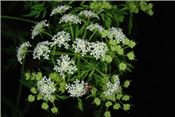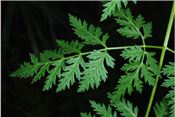Late Winter Scouting Can Reveal A Poisonous Surprise
AVA, MO.
With spring on the horizon, it is time to scout fields for some early emerging weeds. According to Ben Polley, an agronomy graduate student working for University of Missouri Extension, many of the weeds start greening up before the rest of the field.
“One weed that is particularly easy to find this time of year is poison hemlock. It presents as a bright green rosette that, once you know what it looks like, is easy to identify,” said Polley.
Poison hemlock is a biennial plant that has smooth, hollow stems covered in purple splotches. It has compound leaves with many very small leaflets. It has white flowers that grow in clusters that resemble umbrellas. These closely resemble the flowers on Queen Anne's Lace.
Poison hemlock is aptly named. All parts of the plant contain toxic alkaloids that can cause salivation, vomiting, diarrhea, weakness, paralysis, nervousness, trembling, dilation of pupils, weak pulse, convulsions and coma.
“Once established, this plant can take over an area. Its tremendous early growth shades out competing plants and creates a sea of poisonous plants,” said Polley.
It is important to gain control over this poison hemlock as early in the season as possible. In small infestations, physically removing the rosettes in late winter or early spring can be effective. They can be dug out much like dandelions. Due to weather conditions, it is often possible to physically remove them earlier in the season than it is to kill them with herbicides.
“Physically removing mature plants later in the growing season is an unpleasant experience and one that could be very dangerous to some people. Remember, all parts are poisonous. That means the sap too. People should take caution not to get it in their eyes or mouth or on their skin,” said Polley.
There are a number of herbicides on the market that can be used to control poison hemlock. Remember to always read the label and follow all instructions when working with herbicides.
“Do not attempt to use grazing to control this weed. It has an offensive odor and animals tend to avoid it if they have enough other forage available. Hungry, and especially young, animals may be tempted to consume the bright green leaves, much to their detriment, and possibly yours,” said Polley. ∆

Poison Hemlock in bloom
Photo credit: MU Extension

Poison Hemlock leaves